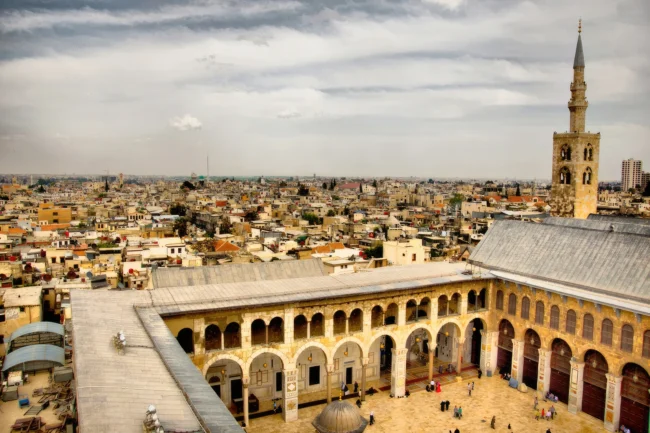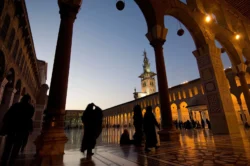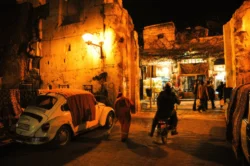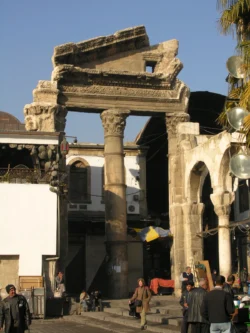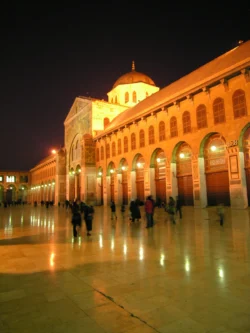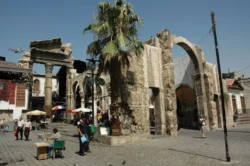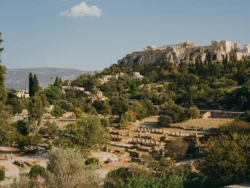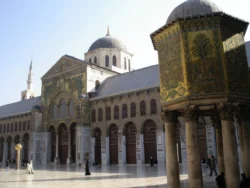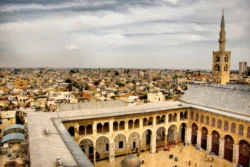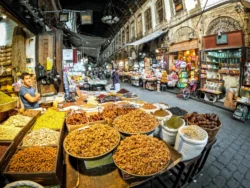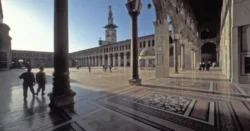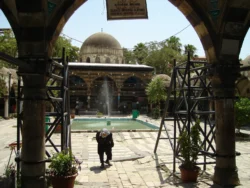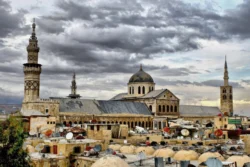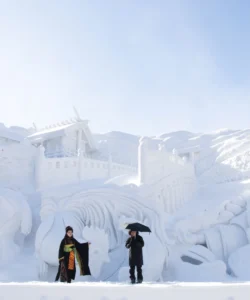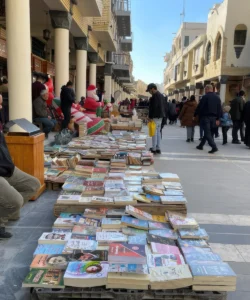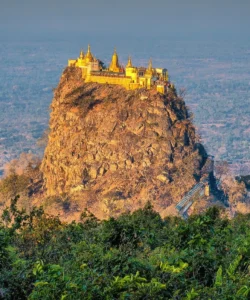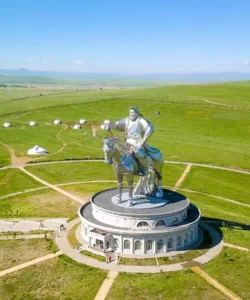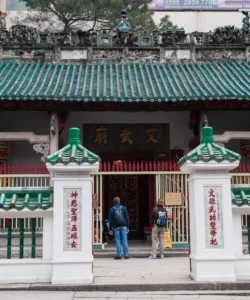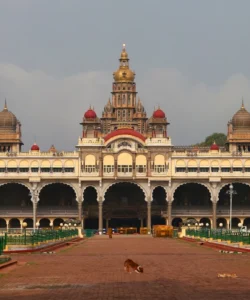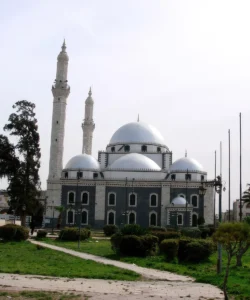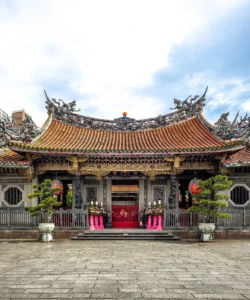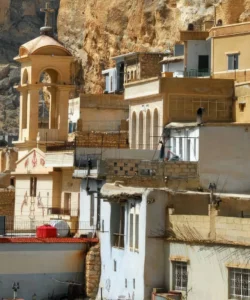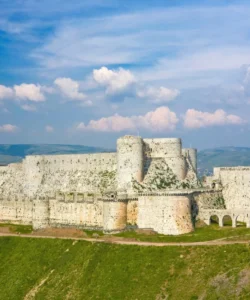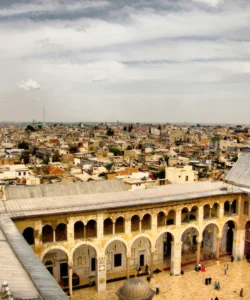The Ancient City of Damascus, also known as the Old City of Damascus, is a UNESCO World Heritage Site and one of the oldest continuously inhabited cities in the world. It is the historic heart of Syria’s capital, celebrated for its unique urban fabric, a fusion of civilizations, and its immense cultural and religious significance.
Listen to an introduction about Ancient City of Damascus
Name and Address
Name: Ancient City of Damascus (Arabic: مدينة دمشق القديمة, Madīnat Dimashq al-Qadīmah)
Address: The ancient city is located within the modern city of Damascus, the capital of Syria. It is a walled city on the south bank of the Barada River.
How to Get There
A note on travel: Due to the ongoing conflict in Syria, many governments advise against all travel to the country. It is essential to consult up-to-date travel advisories from your home country before considering any travel to Syria.
Assuming safe travel is possible, here is how you would typically get there:
- By Air: The main gateway is Damascus International Airport (DAM). From there, you would need to take a taxi or a pre-arranged private car to the Old City.
- By Road: The Old City is the central part of Damascus. Taxis and local transportation are the primary ways to navigate the city. The Old City is a pedestrian-friendly area, and walking is the best way to explore its narrow streets and souks.
Landscape and Architecture
The Old City’s architecture and landscape are a tangible record of its long history. The city’s layout is based on a Roman plan, with a main east-west thoroughfare known as the “Street Called Straight.”
- City Walls and Gates: A significant part of the Old City is still surrounded by its ancient walls, with several historic gates (babs), such as Bab Sharqi (the Eastern Gate), which still stands from the Roman period.
- Winding Streets and Courtyard Houses: The interior is a labyrinth of narrow, cobblestone alleyways that lead to hidden treasures. The residential architecture is characterized by beautiful courtyard houses (bayts), which offer a quiet, private world behind unassuming doors.
- The Umayyad Mosque: This is the city’s most spectacular monument, a masterpiece of Islamic architecture. It was built in the 8th century on the site of a former Roman temple of Jupiter and a Byzantine basilica, reflecting the city’s layered religious history.
- Souks and Caravanserais: The Old City is home to vibrant, bustling souks (markets), such as Al-Hamidiyah Souq, which is famous for its covered street and traditional goods. The city also features many grand caravanserais (khans), which were historic inns for merchants.
What Makes It Famous
The Ancient City of Damascus is famous for several reasons that highlight its unique place in world history.
- Oldest Continuously Inhabited City: It is widely considered one of the oldest continuously inhabited cities in the world, with evidence of settlement dating back to the 3rd millennium B.C. and beyond.
- Religious Significance: The city is a major center for both Islam and Christianity. It holds the Umayyad Mosque, which contains the shrine of St. John the Baptist, and numerous sites important to early Christianity, including the “Street Called Straight” where St. Paul is said to have converted.
- Crossroads of Civilizations: Due to its strategic location, Damascus has been a cultural and commercial hub, ruled by Aramaeans, Assyrians, Greeks, Romans, Umayyads, and Ottomans. Each civilization left its mark, creating a rich tapestry of art and architecture.
- UNESCO World Heritage Site: The city’s exceptional architectural and cultural value, particularly the blend of its Graeco-Roman grid and its Islamic heritage, led to its designation as a UNESCO site in 1979.
Differences from Some Other Wonders (e.g., The Roman Forum)
The Ancient City of Damascus and the Roman Forum both represent layers of history, but they are fundamentally different in their nature and function today.
- Living City vs. Archaeological Site: Damascus is a living city—a vibrant, continuously inhabited urban center with a population that still lives and works within its historic walls. The Roman Forum, in contrast, is a purely archaeological site—a collection of ruins that no longer serves a residential or commercial function.
- Architectural Heritage: While the Roman Forum showcases ruins primarily from the Roman Republic and Imperial periods, Damascus’s visible heritage is a blend of buildings from many eras, with a strong emphasis on later Islamic and Ottoman structures layered on top of its Roman foundations.
- Cultural Function: Damascus continues to function as a major cultural, religious, and commercial center for its inhabitants. The Roman Forum’s function is purely historical and cultural, serving as a site for tourism and research.
Ancient City of Damascus Photos:
